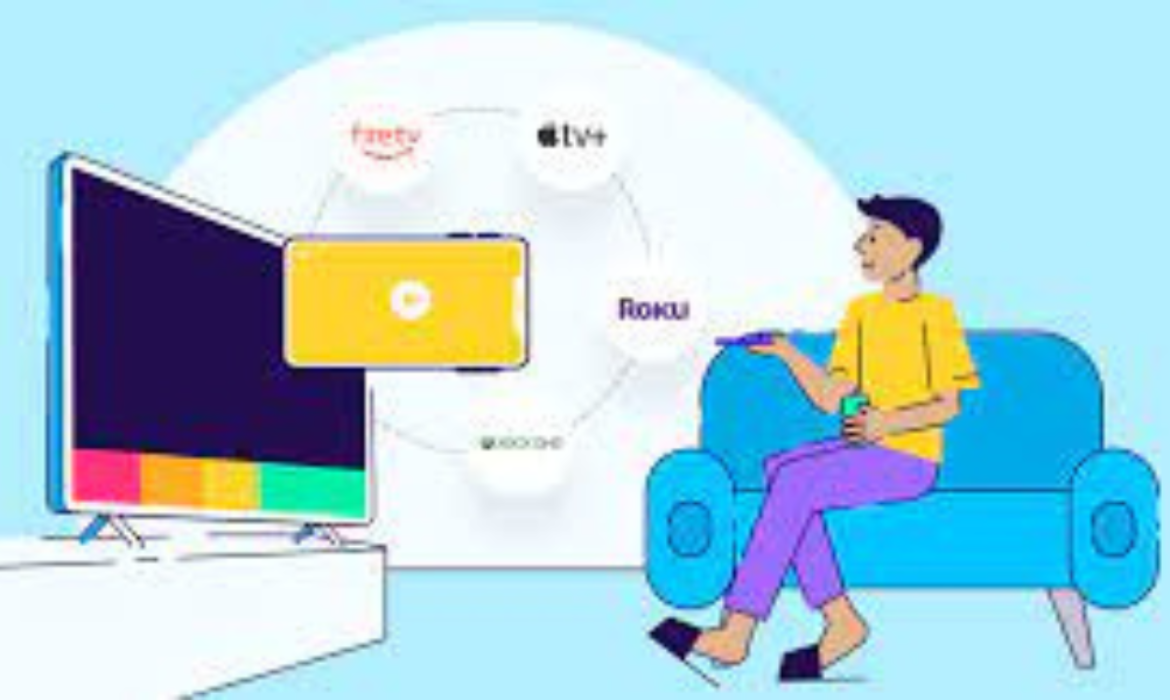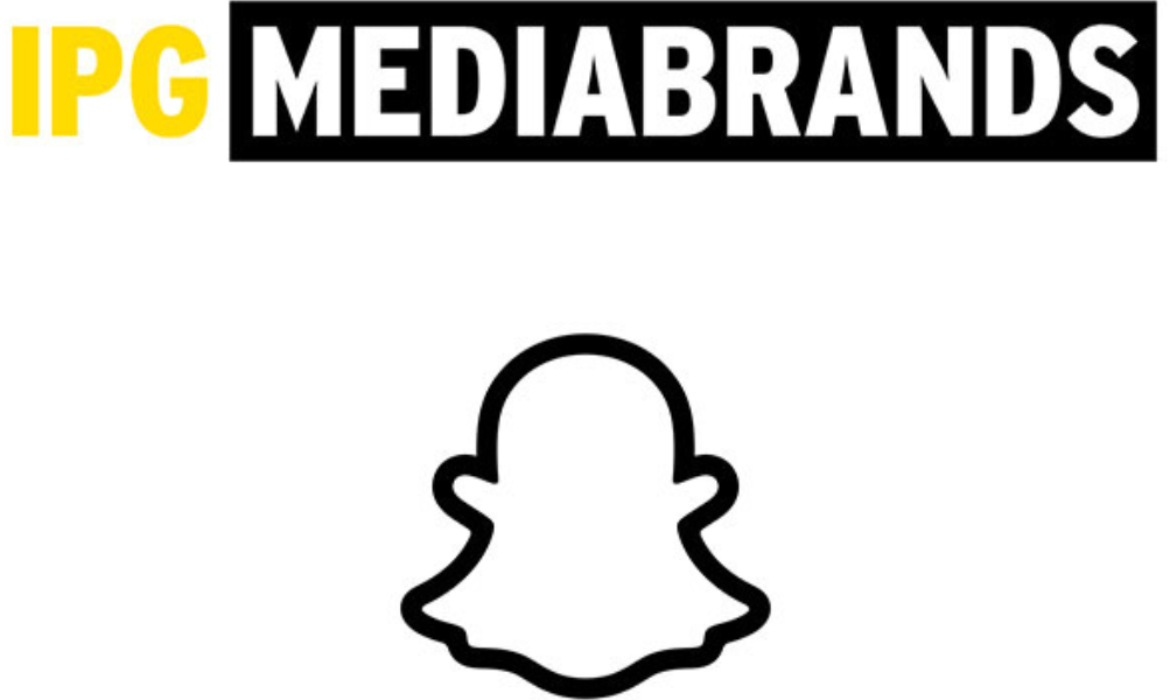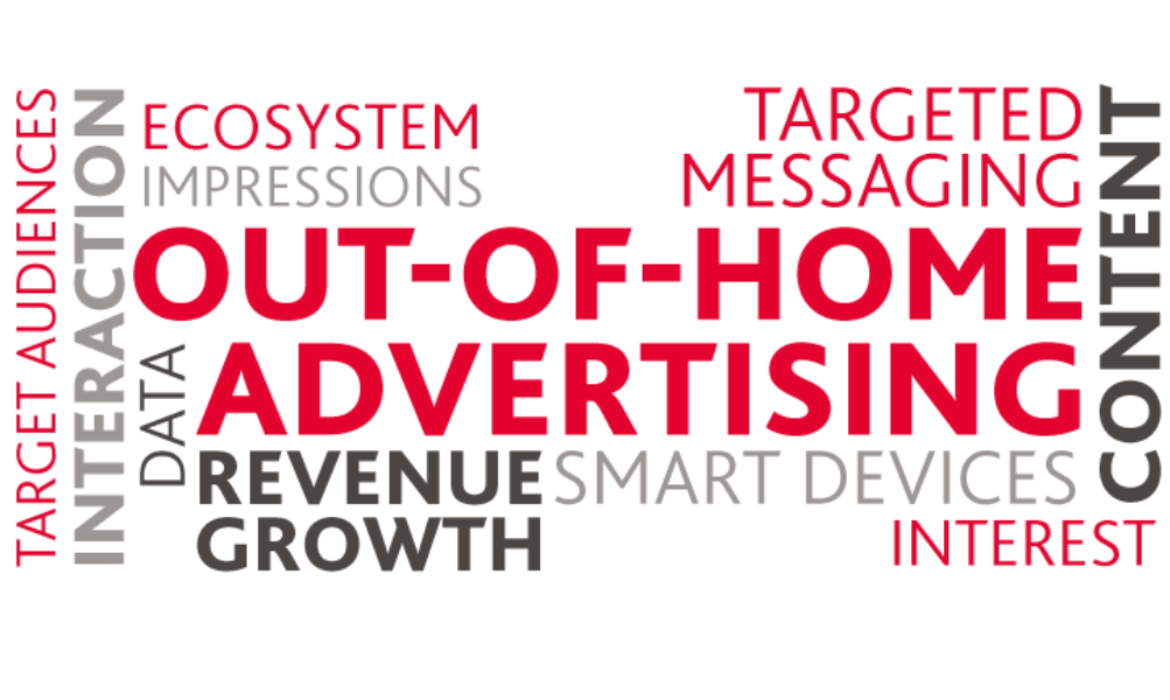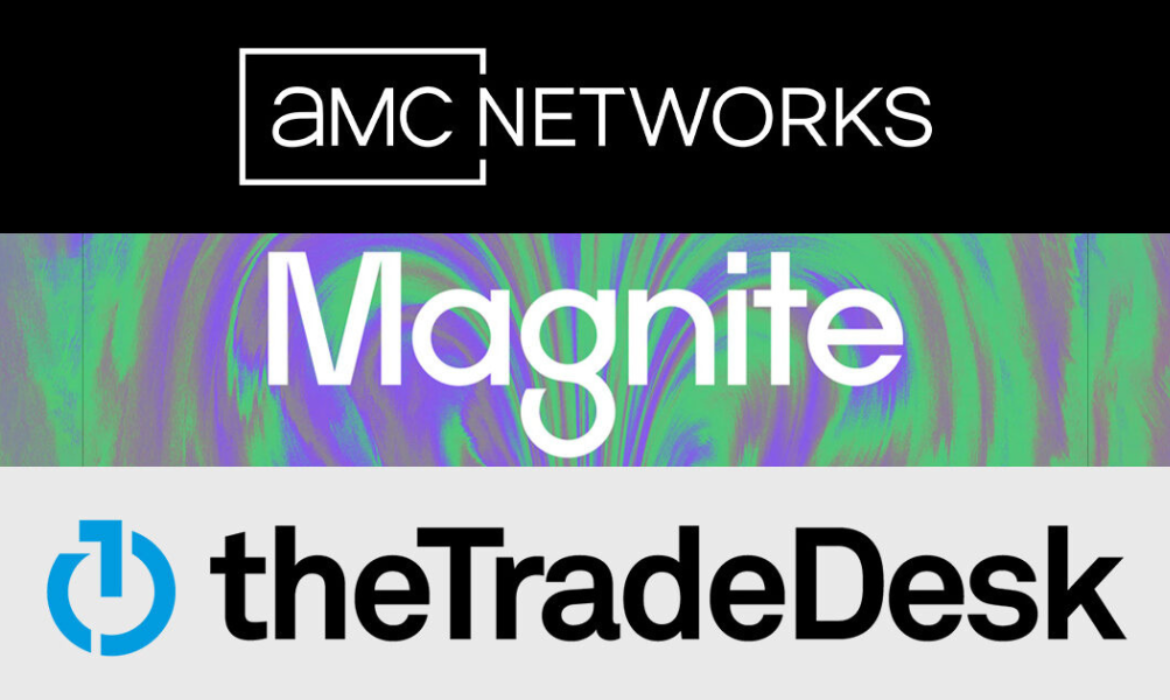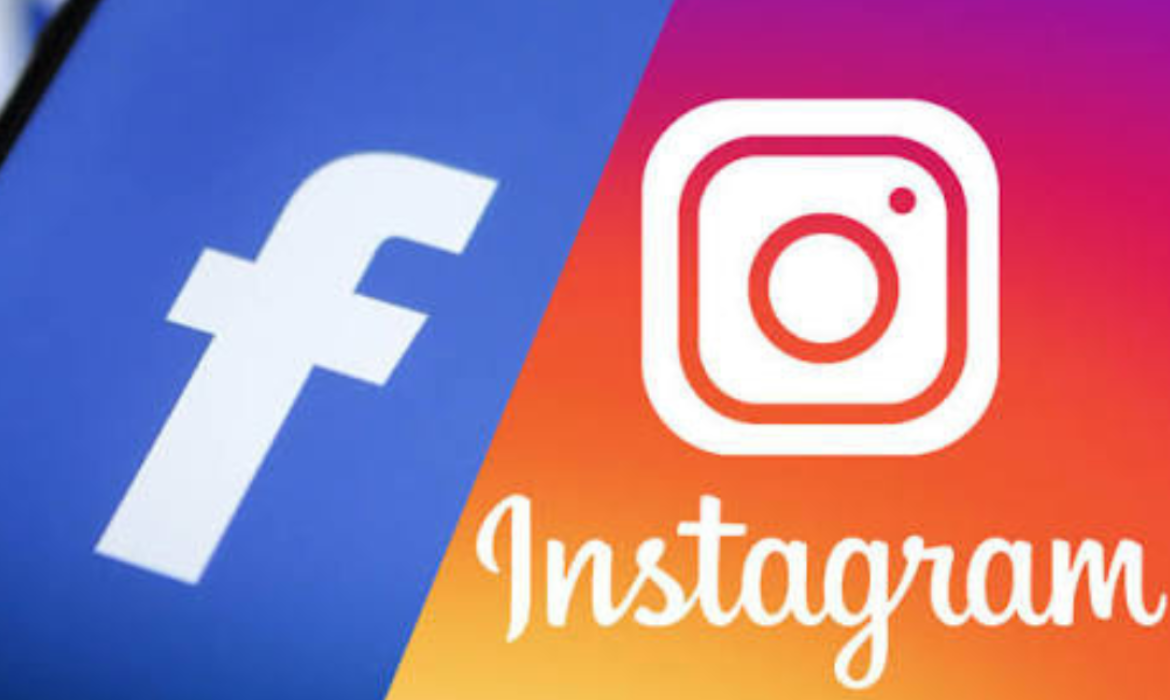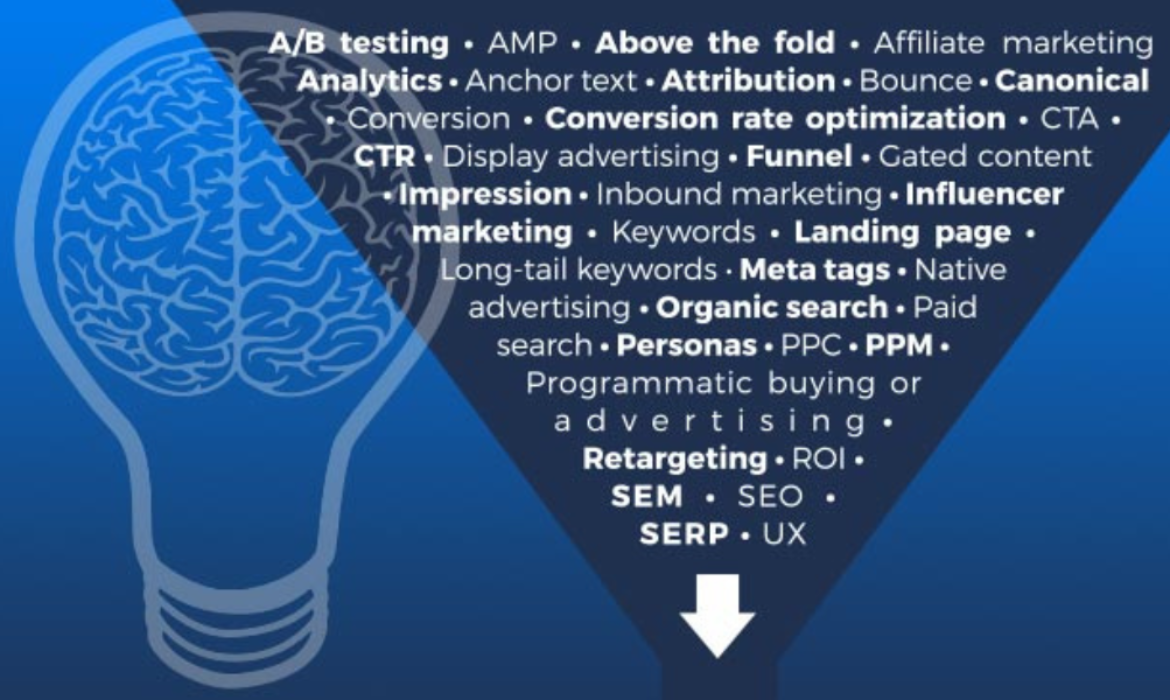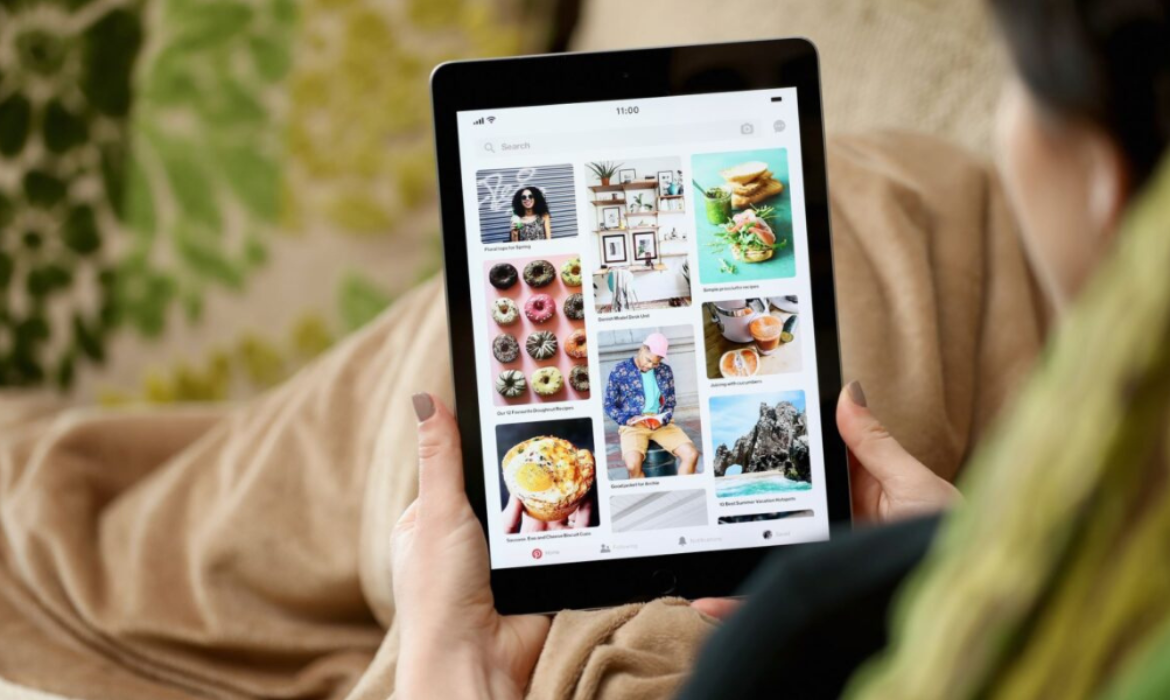Amazon Ads Unboxes 8 New Advertising And Measurement Tools
Amazon Ads launched eight new marketing solutions at its annual Unboxed event. New features and tools will enhance brands’ ability to tell their stories and build more connections with customers, the eCommerce giant announced.
Amazon prioritized three core elements at UnBoxed- Reach, Relevance, and Results – amid an increasingly fragmented media landscape and rising omnichannel expectations. Amazon will likely capture more media spend if advertisers find the new features appealing, particularly among advertisers who sell products on the platform.
Alan Moss, VP of global ad sales at Amazon Ads that no one except the brand itself can tell a brand story and educate the customers about their products. As quoted by Adweek, further added,
“And we’re striving to help brands accelerate this by creating differentiated interactive experiences that can help them tell their stories and cultivate long-term relationships across video, audio, display and brand shopping experiences both within and beyond our store.”
Interesting Read: A Panoramic Perspective Of Amazon’s Advertising Business!
Take a closer look at the unboxed customer-centric marketing solutions:
Interactive Video Ads
With, Amazon is adding an interactive feature to streaming TV ads on the IMDb TV app on Fire TV using a “Send Me More Info” voice command. This will allow viewers to ask for product details via email or QR code to visit the brand’s landing page on Amazon.
The company debuted other voice call-to-action prompts like “Add to Cart,” “Add to List” and “Buy Now.” in the U.S in May.
In a survey by eMarketer, Amazon’s market share in the US rose to 10.3% in 2020, reaching $15.73 billion, as ad revenues from Amazon Fire TV, Twitch, and IMDb TV surged.
Interactive Audio Ads
Similarly, Amazon Music is giving its listeners a natural feel with the options for Alexa prompts like “Remind me,” “Send me more information” or “Add to cart” after hearing a brand message on Amazon Music’s ad-supported tier. Alexa will recognize the product featured in the ad and add it to the cart or set a reminder for it. The interactive audio ad product is in limited beta testing in the U.S.
Brand Follow
Using the Brand Follow feature, customers can keep track of their favorite brands across Stores, Posts, and Amazon Live, as well as see deals from those brands.
For example, consumers will receive mobile notifications if a brand is streaming live on Amazon Live. Customers simply click the ‘Follow’ button to follow a brand that is included as a part of the shopping experience. Per Amazon figures, there are more than 20 million brand follow connections. This feature will help brands foster longer-term, loyal connections with consumers.

Image Credit : Adweek
As quoted by Adweek, Moss said that consumers will see more content and products of the brands they love across Amazon.
“Our vision for Brand Follow is to help brands create a community of advocates and enable them to reward and grow a loyal shopper base in Amazon’s store and, importantly for customers, Brand Follow offers a way to personalize their shopping experience.”
Interesting Read: The Ultimate A-Z Glossary Of Digital Advertising!
Sponsored Display in live streams on Twitch
Twitch will integrate sponsored display ads in its live stream. Earlier this year, Twitch started running the self-service format, sponsored display ads in its browse tab and directory pages. Nevertheless, it is the first time display placements will appear around its core live streaming offering reaching 30 million visitors each day.

Image Credit: Adweek
Amazon Marketing Cloud(AMC)
For the relevance portion, Amazon Marketing Cloud, a platform launched in January, is now closely integrated with Amazon DSP. Advertisers can upload their own pseudonymized data sets and query to AMC along with data sets from their Amazon Ads campaigns. Moss says,
“We’re continuously enhancing AMC’s capabilities based on user feedback—reducing query times, adding a simple user interface that complements our API, and enabling brands to bring their own data sets into their AMC instance.”
New instructional query library
Instructional query library is a part of AMC expansion that provides templated analytics queries across a range of measurement options.
Interesting Read: Amazon Blocks Google FLoC – Here’s Everything You Need To Know!
Brand Metrics
Amazon announced a new measurement tool Brand Metrics. Reports are updated every week. Data includes information such as how many shoppers have considered a brand based on product detail page views or brand searches, and the value of shopping engagements based on sales generated over a 12-month period. Utilizing predictive consideration and sales models, brands can also see their awareness and consideration indices compared to competitors. This report gives a detailed insight to marketers into brand engagement and what strategies are resulting in sales
Amazon Brand Lift
Amazon Brand Lift helps advertisers to launch surveys and solicit responses from Amazon shopper panel data. Brands can quantify the impact for six different campaign objectives like awareness, preferences, and intent Survey results are available within two weeks of a survey launch. Amazon said to provide insights on the “percentage of respondents who report being aware of a brand or not, or that are likely to purchase from a brand.” It is currently in beta and available in the U.S.
Connected TV Explained: The Essential Glossary Of CTV
Connected TV (CTV) is growing rapidly in programmatic advertising and taking it by storm. And it does not come as a surprise!
CTV ads are most effective, highly targeted, trackable, and brand safe. Compared to traditional TV advertising, they offer broadcast-quality ad experiences. According to the CTV Neilsen guide, 60% of U.S. advertisers plan to shift ad dollars from linear TV to either connected TV (CTV) or over-the-top (OTT) this year.
Given the growth in consumption and advertising opportunities, CTV usage has increased by 123% since 2018. However, given the breadth of CTV, identifying ad opportunities is not easy. In most cases, Over-the-top (OTT) and Connected TV (CTV) devices are confused for one another when accessing TV/video content. Moreover, adding Linear TV or traditional TV (in today’s parlance) makes the water even murkier.
Thus, this glossary explains the difference between Connected TV (CTV), Over-The-Top (OTT), and Linear TV. In a quickly evolving programmatic advertising landscape, the glossary aggregates many terms and acronyms used by marketers.
Interesting Read: All You Need To Know About Connected TV Advertising!
First Things First
Before we delve into other terminologies, let us understand the baseline definition of certain streaming terms.

Image Credit: Criteo
Linear TV
Linear TV is a traditional cable or satellite TV with set viewing timings. A viewer can watch a show at a specific time on a specific channel.
Connected TV
CTV or Connected TV simply means any device like smart TV used to stream TV and video content through the internet. A TV set that can access OTT content and is connected to the internet. According to a recent report, 80% of U.S. TV households have at least one connected TV device. Connected to the digital world, CTV can display programmatic ads to its viewers in real-time.
Interesting Read: Trade Desk Partners With Samsung Ads For Programmatic CTV
Over-The-Top (OTT)
To put it simply, this is the process of streaming content from an app on a CTV or any other internet-connected device. In addition to video-on-demand platforms, OTT applications include audio streaming, messaging, and internet-based phone services.

Image Credit: Clear code
A Similar Offering
There is a new set of industry jargon that is often confused with Connected TV advertising. They are remotely close to CTV but not the same.
Programmatic TV
A method of buying and delivering ads on linear TV with a technology-automated and data-driven slant. Some TV ad slots are available for programmatic purchase through DSPs. The most important point to note is that the ads are different from Connected TV (CTV). There is a common misconception that programmatic TV is referred to as “CTV Programmatic” or “OTT Programmatic.” These terms refer to Connected TV, as opposed to traditional TV. Understanding this difference is vital for advertising professionals in this new environment.

Image Credit: Smarty Ads
Advanced TV
An umbrella term referring to any TV content streamed through the internet -live or on-demand. It includes OTT, connected TV (CTV), and addressable TV but beyond traditional, linear TV models. Advanced TV’s is popular worldwide. A Samsung study suggests 63% of all TV viewing time is held on streaming services.

Image Credit: Liveramp
Addressable TV
Addressable TV or ATV is a technical ability to provide each household watching a different ad experience for the same program. It enables advertisers to target specific audiences with individual advertisements and optimize their marketing campaigns. Ads for addressable TV are served programmatically just as they are for addressable digital advertising.
For instance, Mr.A might experience real estate advertisements because they are looking to buy a house, while you see an ad for a motorbike based on your previous interest.

Image Credit: Broadband TV
The below image explains how the addressable TV works.

Image Credit: IAB
Interesting Read: Here, There, Everywhere, It Is Cross-Screen Advertising!
Inventory and Formats
Video on Demand (VOD)
Video-On-Demand (VOD) is also known as Addressable VOD. Users can watch the content they enjoy at any time that’s convenient for them. Television viewers don’t plan their schedules around the TV, instead, they fit it into their own busy schedules.VOD content can be streamed or downloaded after it is aired live. As a result, viewers can access it anytime and anywhere even if they miss an episode. It can be found on set-top boxes, OTT content services, mobile web, mobile apps, and video streaming services. Unlike traditional TV, viewers can pause, fast-forward, and play as per their choice, and ads are placed within the content.

Image Credit: Pallycon
SVOD
Subscription video on demand (SVOD) is a streaming service based on a subscription model. Consumers subscribe for a fee, to access a catalog of on-demand content and watch are ad-free content. SVOD examples include Netflix, Amazon Prime, Disney+, HBO MAX, and AppleTV+.
Some SVOD providers, on the other hand, offer a hybrid model that offers ad-supported content at a lower subscription price. Hybrids are categorized under SVOD since users still need to login and pay a subscription fee. Hulu, Peacock, ESPN+, and Quibi are a few examples.
AVOD
Advertising-based video on demand (AVOD) is ad-supported content and free to consumers. YouTube and Hulu are the best examples.
TVOD
Transactional video on demand is the opposite of SVOD. Customers buy content on a per-view basis. A customer would pay for a movie or TV show that they desire to watch. Examples of TVOD are Google Play, Apple iTunes, or YouTube movies.
Multi-channel Video Programming Distributor (MVPD)
In layman’s terms, it is a service that provides multiple television channels. The service providers deliver video programming services for a subscription fee through cable or satellite television. Examples include Comcast, DirecTV, DISH, Cox, Verizon, and more.
vMVPD
vMVPD stands for Virtual multichannel video programming distributor (yes, quite a mouthful). These are also called skinny bundles and offer economical digital cable or satellite packages. A streaming service or service provider provides video programming over the Internet without creating their own content. Sling TV, Playstation Vue, Pluto TV (Viacom), Xumo are a few examples.
Wrapping Up
Connected TV (CTV) is becoming a part of every marketer’s brand mix. Brace yourself for the future of advertising. This guide is an effort to well-versed you in the exciting world of Connected TV (CTV) terms.
Quick Recap
A quick recap of the full-on dictionary of Connected TV (CTV)terms with an illustrated guide.

Image Credit: Sharethrough
Interesting Read: The Ultimate A-Z Glossary Of Digital Advertising!
Mediabrands and Snap Inc Collaborates For A Mobile Video Measurement
MCN Mediabrands,IPG/MCN’s media and marketing solutions division, announced a collaboration with Snap Inc. to launch a mobile video measurement initiative. Mediabrands and Snap aim to provide clients with rich insights on how Saudi Arabian communities consume and interact with mobile video.
Why the joint collaboration?
Together, the companies will combine the expertise of their marketing science experts to provide original research and analysis on the scale of mobile video usage. A study will be conducted to examine how Saudi Arabian brands use mobile video to engage audiences. Increasingly, communities in Saudi Arabia rely on mobile video as a primary source of information and entertainment. As a result of the initiative, video advertising across platforms will also be evaluated for effectiveness and impact on growth.
Snap and Mediabrands put the learnings into practice by helping brands identify opportunities to enhance performance. Based on their insights, they will create more engaging and effective campaign assets that thrive in a mobile-first environment.
Interesting Read: Snapchat Sees a 20% Plummet In Revenue Due To Apple’s Privacy Changes!
That’s What They Said
Shadi Kandil, CEO of MCN Mediabrands expressed pride in the longstanding relationship with Snap in MENA. He commented,
“Our collaboration has always focused on building critical knowledge in the areas of mobile video and communication to the benefit of our clients. We see this collaboration as a strategic step in this direction, and one that will help our clients win in their respective industries”.
Amer Chehab, Head of Agency Development MENA at Snap Inc., commented
“There’s a rich legacy of storytelling in Saudi Arabia and we already see that visual, camera-led, vertical communication on mobile really resonates with local audiences.”
Furthermore, Chehab explained that advertisers – whether they are multinationals or Saudi-owned brands – enjoy access to tools that help them gauge, rank, and optimize their campaigns. Nonetheless, they are often asked to provide detailed insights. He also added –
“We are often asked for deeper insights, seeking to understand the complexity and depth of mobile video, which is what we are going to provide through this exciting collaboration with Mediabrands.”
Interesting Read: Power Of Out-Of-Home Advertising In The Middle East And Road Ahead
Power Of Out-Of-Home Advertising In The Middle East And Road Ahead
OOH- Out-Of-Home Advertising is a media format that walks with you from the time you step out of the house.
Don’t you believe me?
Let’s take a quick walk from your apartment. There is a screen in your elevator or outside your apartment. In a few yards, you’ll see a lamppost or a mupi greeting you. Speeding along at 90km/hr, you will come across attractive signage. And they are everywhere on your visit to supermarkets or malls. OOH is by your side, anywhere and everywhere in UAE all through the day in formats to engage and impress you.
In the UAE, the world’s oldest form of promotion ‘ out-of-home ’ advertising has been evolving over the years. OOH advertising Middle-East still commands a lion’s share of the attention of the media mix. It stands on the tipping point between traditional and technological advancements. The proliferation of new technologies and changing consumer patterns have resulted in a paradigm shift. Before understanding the OOH advertising Middle-East market, let us comprehend the basic concept of Out-Of-Home advertising.
What is Out-Of-Home (OOH) Advertising?
In simple words it OOH Advertising means any visual advertising media that reaches consumers when they are outside of their homes. Outdoor advertising spaces would be lampposts, bridge banners, billboards, wrapping, and more. There is a rise of out-of-home in middle-east. It is not unusual to see huge hoardings in Dubai, bridge banners in Abu Dhabi along with the circuits of Mupis in Sharjah & the Northern Emirates. For those unfamiliar with market prices, there are many options at various price points – even among similar sites from different providers.

Picture Credit: Talon
Interesting Read: JGroup and Blis To Partner For Exclusive Location-Based Advertising In MENA
Out Of Home (OOH) Advertising Middle East And Africa
Outdoor Advertising is the only traditional medium that has steadily grown for the past 10 years. According to PQ Media’s forecast,2020 was the most difficult year for the entire OOH media industry. The onset of a strong recovery, however, is evident this year, with global OOH revenues projected to increase 6.6% to $55.03 billion, followed by accelerating growth in 2022.
Why is this medium so appealing and sustainable? It tackles everything that’s considered a challenge in digital media.
An independent study by Nielson suggests OOH drives online activation. The same study further reveals that nearly five in 10 US adults are engaged on search engines alone when they encounter an outdoor ad. The engagement numbers are even higher on Facebook, Twitter, and Instagram.

Out of Home Advertising Association of America
Statista reveals in 2020, spending on OOH advertising in the Middle-East and Africa (MENA) region amounted to 233 million U.S. dollars. Outdoor advertising is relevant and important considering we live in a mobile economy today. It has the potential and power to create a great impact on the consumers. Consumers are more likely to click on a mobile ad after seeing the ad on OOH. Some more data to help you understand the role of OOH in a brand’s growth, market presence, and loyal customers.
- an average 71% share who said digital billboards stand out better than online ads
- an average 85% share of consumers who think out of home advertising is helpful
- an average 40% boost in effectiveness for digital search when paired with OOH
- an average of $3.79 sales ROI for retail companies per $1 spent on OOH advertising

Interesting Read: Trade Desk Partners With Choueiri Group For Better Programmatic Access In MENA
Industry Experts Speaks On the Biggest Challenges Faced By OOH Advertising Middle East
OOH’s reach and frequency make it a good medium for creating brand awareness and providing a call to action (CTA) with consumers. The hyper-local nature of OOH ads provides people with those “aha” moments. Consumers can recall the first time they saw a ‘special build’ on Sheikh Zayed Road? Or a unique hoarding at Al Kahil? Or a brand new automobile with headlights mounted on the unipole? Or Wrapping a bus on Abu Dhabi’s first transit media?
Unlike any other medium, OOH offers round-the-clock exposure and complete control of the advertising space. However, the OOH advertising Middle East industry faces multiple challenges which dampen future growth.
- There is no regulatory body for the OOH industry to resolve issues faced by the vendors which leads to unhealthy competition at times.
- Spiraling high rents by landlords in spite of softer demand and tight advertising budgets. Also, there is a mismatch in the demand-supply of locations.
- OOH is incapable of providing campaign-specific and every-moment ROI. It lacks advanced measurement tools compelling advertisers to shift to digital due to limited budget.
- Advertisers lose out on brand recall and awareness due to the transfer to digital as they look for value for money and not only impressions.
- Digitization is slow to catch in the OOH industry. MENA is trailing behind in technology and programmatic advancement compared to the international market.
“The main challenge the industry is facing is that it is still full of analogue options, which means any small mistake in or changes to the creative requires additional costs borne by the advertiser. A lack of digitalisation also means there aren’t a lot of things that advertisers can measure natively. At best, they receive a guesstimation of impressions. The other challenge is the fact that today’s consumer wants to see ads tailored to their interests.” -SAEED ALSHAMSI , Managing Partner, Lifeonscreen (OOH Guide 2019-20)
“There is a wrong perception that outdoor is competing with digital, and clients and agencies are focusing on programmatic planning via social media and online, and using OOH as a secondary medium to complement online.” – REHAN MERCHANT, Group CEO, Emirates Neon Group (OOH Guide 2019-20)
The Road Ahead
Amidst a fragmented media landscape, OOH is a relevant medium that has a wider reach and makes people stop-notice-think-buy. But what’s next for the OOH industry? Digital, Digital, and Digital.
OOH complements other media channels but DOOH is the ultimate. The OOH advertising Middle East industry is moving at a slow pace towards digitization but it will experience a revolution. In recent times, DOOH has taken off and cannot be easily avoided, skipped, or blocked, unlike online TV adverts. A large 3D illusion LED billboard to smart screens across the city with interactive elements like sensors, touch-sensitive links that play audio or video when touched, or facial recognition to customize content. It is necessary to develop standardized processes, measurement tools, and retargeting strategies to programmatically handle DOOH. Due to these robust technologies, OOH suppliers will better invest in resources and integrate these solutions as a part of their portfolios.
People are well on their way to embracing technology in media, and artificial intelligence with digital formats of real-time trading will have a positive impact on gaining traction. And what’s more, the transition from static to digital sites will continue
Interesting Read: All You Need To Know About The Rise Of DOOH Advertising!
AMC Networks Offers Programmatic Addressable Advertising On Linear TV
An industry first, AMC Networks makes addressable programmatic television advertising a reality. It announced a partnership with two of the biggest names of adtech – Trade Desk and Magnite.
The First Of Its Kind
The cable programmer worked on several campaigns with national advertisers to enable programmatic and addressable buying on linear television. The new capability allows advertisers to buy live TV inventory with the same type of automated technology traditionally reserved for digital.
For more than a year, AMC Networks has been working to make it possible for advertisers to buy linear TV through automated and programmatic platforms. The aim was to enable advanced and automated buying tools, with enhanced targeting around popular and high-quality content.
Evan Adlman, senior vice president of advanced advertising and digital partnerships for AMC Networks pledges to work on 100% linear reach addressability. He also added that providing a full range of advantages on linear television will be the prime focus of the advertising partnerships
“This is a huge development, for us and for the entire industry, unlocking the value of linear inventory by providing advanced programmatic buying, with full addressability, on linear television.”
Interesting Read: All You Need To Know About Connected TV Advertising!
Successful Pilot Experiment With The Advertisers
The cable programmer enabled the addressable TV capabilities in Q3. It teamed up with The Trade Desk and sell-side platform Magnite to implement addressable programmatic buying for major advertisers like Best Western, Smithfield Foods, Securian Financial. In a statement, AMC Networks said all these clients continued to stay live in the fourth quarter. It is also working to expand the current brand partners and add new ones.
In the past, such buys were only available for AMC Network’s web content, which is generally less expensive. Programmatic buys on linear TV involve advertisers cross-referencing their own first-party datasets with those of media owners to improve their audience targeting. This is usually accomplished using an encryption tool such as a data clean room.
Crucial Partnerships
AMC Networks claims the partnerships are crucial in an effort to protect the core linear product. In partnership with Magnite, the cable programmer intends to make linear reach 100% addressable, regardless of where the consumer views the advertising.
Matt McLeggon, senior vice president of advanced solutions, Magnite said,
“The work we’ve done with AMC brings the full power of programmatic execution to linear TV for the first time and gives advertisers the technology they need to holistically manage campaigns across CTV and linear TV.”
AMC claims an ideal partnership with trade Desk, a buy-side tool popularly known as a demand-side platform. Owing to the Trade Desk’s wide base of media buyers., more advertisers can access inventory.
Tim Sims, chief revenue officer, The Trade Desk said that the partnership will bring advertisers all the advantages of programmatic plus the opportunity to buy high-quality content like never before.
“Giving advertisers the access to a new pool of premium inventory and the ability to use their first-party data through this linear addressable capability is a perfect match.”
Interesting Read: Trade Desk Partners With Choueiri Group For Better Programmatic Access In MENA
Facebook Changes Counting Policy For Ad Planning And Measurement
Facebook outlined a significant change in a new update to how it counts user accounts when planning and measuring ads. The tech giant will treat users who do not have their Facebook and Instagram accounts linked in Accounts Center separately for ad metrics. Whereas, accounts that are connected in the Accounts Center will be counted as one person. The new update will roll out in the next few weeks. The privacy-centric course correction is likely to help advertisers to reach more accounts.
Interesting Read: Facebook Advertisers Battle Ad Results After Apple’s Privacy Changes
Graham Mudd, Vice president of product marketing for ads explained in a blog post that before Facebook counted users with multiple accounts as a single person for ad purposes. They counted them only once if their Facebook and Instagram accounts were linked via those apps or believed that the same person used both. For instance, people who accessed Facebook and Instagram via the same device or shared the same email address across the two platforms were counted as one person when they interacted with ads.
It makes sense for Facebook to honor this choice for ad purposes proactively. As a result, it will not get called out later for linking accounts without the user’s knowledge. Graham Mudd wrote in the blog,
“This update aligns with trends of offering people more control over how their information is used for ads and is consistent with evolving advertising, privacy and regulatory environments.”
Interesting Read: Why Facebook thinks Apple’s iOS 14 privacy push will have a severe impact on business
How Will This Affect The Advertisers?
Earlier in June, Facebook informed advertisers of how users will be counted, which includes in-product notifications. With this new update, Facebook will rely on preferences from the Accounts Center – like whether accounts are linked or unlinked – to inform advertisers’ planning and campaign measurement.
In the blog post, Graham Mudd said that advertisers won’t see a substantial impact on reported campaign reach. However, noted that keeping unlinked account holders separate for advertising purposes, advertisers may see an impact on campaign planning estimates and performance reporting for unique metrics. Advertisers can see increases in their pre-campaign estimates, including estimated audience size.
Facebook has recently retitled the ‘potential reach’ metric as ‘estimated audience size’. It will now display a range of numbers to advertisers for their marketing campaigns instead of a specific number. In this way, Facebook is responding to ongoing lawsuits over how it calculates potential reach.
Interesting Read: The New World Of TikTok Marketing, Everything You Need To Know!
The Ultimate A-Z Glossary Of Digital Advertising: Part 2
This is Part 2 of the digital advertising glossary series. In Part 1, we decoded many new terms (that people just throw like a football at meetings) which will help you to speed on all things digital advertising.
Continuing Part 2 of the digital advertising glossary series, let’s jump straight back in.
Native Advertising
Native advertising is the practice of using paid advertisements that have the look, feel, and function of the media format in which they appear. In an attempt to improve user experience, it blends seamlessly into the website content. As a result, it appears to be a natural part of the editorial flow of the page.
It is non-disruptive for the reader and catches immediate user attention. Below are native ads placement examples:

Image Credit: NT technology
OTT Advertising
OTT is the advertising jargon for Over-the-top. The OTT advertisements are commercials that can be delivered on OTT platforms via streaming services.
OpenRTB (Real-Time Bidding)
The advertising terminology OpenRTB should not be confused with RTB(real-time bidding).
The OpenRTB protocol is adopted by Indian Advertising Bureau (IAB). It is used for communications between parties involved in media transactions via RTB. Essentially, OpenRTB aims to create a lingua franca for communication between sellers and buyers. It allows all DSPs, SSP’s and ad exchanges to use the same language for all online transactions.

Image Credit: Indian Advertising Bureau.
Programmatic Advertising
A term that needs a special mention in the digital advertising glossary is “Programmatic Advertising.” It is projected to be the game-changer for digital advertising. Programmatic automates the process of buying and selling online advertising space with the help of technology and data. This means, with the introduction of programmatic publishers, advertisers or agencies don’t have to sit across to discuss ad size, rates, et. Ad buying is done through algorithms and data insights.
Programmatic media buying includes Real-time bidding (RTB), Programmatic Direct, and Private Marketplace (PMP).
Interesting Read: Programmatic Advertising Platforms in 2020: A Complete Guide
Prebid.js
Prebid.js refers to a collection of open-source JavaScript libraries offered by Prebid.org, the header bidding platform. It allows publishers to connect to over 150 SSP’s (Supply-side platform) that taps a wide range of advertising demand sources.
Prebid.org was created to help publishers manage their connections with a number of SSPs. Historically, each SSP had its own setup and complicated codes that were time-consuming. Prebid.js launches are simpler and improve the functioning of header bidding and lower page load times.
Interesting Read: Index Exchange Joins Hands with Prebid.Org to Deal with Industry Crisis
Real-time bidding (RTB)
Another term for the act is ‘Open Auction’and has to be a part of this digital advertising glossary. The buy and selling of digital ad inventory via real-time auctions that happen in milliseconds it takes for the web page to load.
Real-time bidding (RTB) auctions occur when advertisers (through Demand-side platforms (DSP)) buy individual impressions from publishers (via Supply-side platforms (SSP)s and Ad exchanges). It takes under 200 milliseconds from the time a bid request is placed until the ad is served in RTB. For perspective, the human eye takes 300 milliseconds to blink.

Remnant Inventory
A publisher who is unable to sell off the ad inventory via a direct or premium deal with advertisers.
Supply-Side Platform (SSP)
A supply-side platform (SSP) is software used by publishers to sell their display, video, and mobile ad inventory in an automated manner via real-time (RTB) auctions. SSP enables publishers to sell their ad inventory to the best network as it aids to improve the yield optimization of the advertising space inventory. It minimizes wasted space and maximizes views.

Image Credit: Publift
SSP plays a key role in the RTB media transactions as it connects to ad exchanges and DSPs to sell publishers (website and app owners) ad inventory.
Third-Party Cookies
The third-party cookies are stored in a domain other than the currently opened website(domain). Ad-tech platforms use advertising jargon for online advertising purposes. Advertisers or technology providers use scripts or tags to place on the consumer website by, and not website owners.

Image Credit: Clear code
As an example, news websites create first-party cookies when you visit their website. Like other publisher’s sites, the news outlet uses ads designed by other websites that create a third-party cookie and store it on your computer.
Interesting Read: End Of Third-Party Cookies, What Is There For Marketers: Takeaway!
Unique user identifier (UUID)
Adtech platforms mostly use this advertising jargon. UUID is a set of data stored in a cookie used to identify and track user actions across various platforms. UUID can be used as an alternative method to PII (personally identifiable information) such as email id or contact details to identify users.
Viewable Advertising
The ad lingo ‘Viewability’ simply determines whether the digital advertisement has been viewed by a human being or not. The aim is to know if a user or a bot is viewing the ad. It will help the advertisers to measure the campaigns effectively.
The MRC (Media Rating Council) defines a video ad as “viewable” or “viewed” only if it had at least 50% pixels appear within the browser space for at least 1 second (for display ads), or 2 seconds (for video ads).

Image Credit: Online Advertising Guide
Walled Gardens
A walled garden is a closed ecosystem where the operator does not share information, technology, or data with third parties. The advertisers have limited or less access to customer data and less control over performance measurement. Examples of walled gardens are duopoly Facebook and Google.

Image Credit: Clearcode
Yield Optimization
This advertising terminology simply refers to the efforts taken by publishers and advertisers to maximize the revenue and extract the highest amount of value from ad serving efforts.
Publishers can improve yield rates through price floor adjustments, increasing the inventory value of their ads, and diversifying the advertising demand sources. Advertising yield rates can be improved by defining their target audiences precisely, develop effective bid strategies, and diversifying the supply sources.
Finally, There You Have It!
Digital advertising has plenty of advertising lingos, acronyms, and buzzwords. Our digital advertising glossary has decoded the meaning of the complex advertising jargon that is flying around all over the place. This glossary will simplify your understanding of advertising terminology.
The Ultimate A-Z Glossary Of Digital Advertising!
We all know our ABCs, right?
But when it comes to understanding the complicated advertising jargon used by digital marketers, it is mindboggling. They randomly throw words, assuming we know it all.
The question remains for those who are new to the field or whose specialized roles don’t span the entire spectrum? That’s why we have compiled a digital advertising glossary of the most commonly used terms and definitions.
Digital Advertising Glossary: Beginner’s Alphabetical Guide
Whether you are an amateur or an experienced marketer, this alphabetical digital advertising glossary – will upgrade your digital skills. It will help you to understand advertising terminology that flows so easily off the tongues of our subject matter experts.
AdTech
AdTech is an umbrella term for Advertising technology. It consists of software and tools used by advertisers, ad agencies, publishers, and other industry players to plan and manage their advertising or monetization.

Image Credit: EPOM
Interesting Read: A One-stop Guide On All You Ever Need To Know About AdTech In 2020
Ad Exchange
An ‘ad exchange’ is a stock market for the online ad industry. Publishers and advertisers trade ad inventory. It is an auction-based, automated digital marketplace that allows publishers to offer their ad inventory for sale and advertisers to purchase ad inventory.

Image Credit: AdPushup
Brand Safety
The technology that prevents ads from appearing in inappropriate contexts on publishers’ sites, which could damage the reputation or image of the brand.
Cross-Screen Advertising
Switching between multiple devices is the new way of content consumption. Campaigns that tie digital advertisements and consumers can view one campaign on multiple devices like smartphones, tablets, connected TV, and more.
Read more: Here, There, Everywhere, It Is Cross-Screen Advertising!
Contextual Targeting
The most common question asked, what value is used to determine whether your ad will show on a page and, if so, the ad’s position?
Contextual Targeting matches the ad to the page based on the content. Advertisers can target ads to the relevant groups of consumers based on their interests and has the most impact.
Demand-Side Platform
Demand- Side Platform is an essential platform for advertisers to buy, search, display video mobile ads. It enables advertisers to buy ad placements in real-time on the publisher websites made available by ad exchange and networks. Some of the DSP players are Amazon DSP, AdRoll Trade Desk, Xandr, Google DV360, and more.

Image Credit: ClearCode
DOOH Advertising
An abbreviation for the advertising terminology Digital Out-of-Home Advertising. The concept combines the offline and the digital aspects of OOH advertising. It delivers content via digital screens like billboards, elevator screens, and more.

Image Credit: Admixer
Read more: All You Need To Know About The Rise Of DOOH Advertising
Effective Cost Per Mille (eCPM)
It means an effective cost per thousand impressions. (Mille refers to thousands). In online advertising, the term “impression” refers to the chance to show an advertisement to a consumer on a digital device.
eCPM is a key publisher’s metric to predict revenue for every one thousand impressions. It can be calculated not just for CPM campaigns, but for Cost Per Click(CPC) and Cost Per Lead (CPL) too. On the other hand, CPM is an advertiser metric to estimate the cost of their campaign and reach as per their budget.
eCPM = (Total ad Revenue / Total Impressions) * 1000
First-Party Data
It is an advertising terminology that means information about customers that a company collects from its own sources. Sources for first-party data can be both- online or offline like the company’s website, social media, or surveys.
Interesting Read: Digital Advertising Industry Plans To Replace Cookies With First-Party Data
Full-Funnel Marketing
An ad lingo that has to be a part of the digital advertising glossary. An integrated strategy that addresses the entire consumer journey and incorporates objectives for each step of the funnel: awareness, consideration, and conversion.

Image Credit: Fridge Agency
Guaranteed Deals
A type of programmatic deal where a buyer directly buys inventory from the seller for a guaranteed impression and volume. The publisher agrees to deliver at a guaranteed budget price.
Header Bidding
As defined by Digiday, Header bidding is an advanced programmatic technique wherein publishers offer inventory to multiple ad exchanges simultaneously before making calls to their ad servers. The idea is to let multiple demand sources bid on the same inventory, creating a competitive ecosystem that optimizes a publisher’s revenue. The act is also known as advance bidding or pre-bidding,
For header bidding to work, the header in the publisher’s page used for advertising to its users must contain Javascript.

Image Credit: ClearCode
A study states that in Q2 2021, 66.7% of publishers are using header bidding to monetize their inventories. Furthermore, it reveals that the adoption of this method has generated results. 31% of total publishers witnessed an increase in their yield.
Identity Data & Resolution
The advertising jargon refers to the process of connecting different identifiers like email address, mobile number, customer ID, account username, or more from multiple platforms and devices to a single identity. It helps brands to get a cohesive and omnichannel view of a consumer. It enables brands to deliver people-based targeting, personalization, and measurement.

FoxMetrics
Last Click Attribution
This method identifies the last touchpoint a customer engaged with or clicked before making a purchase, and gives that touchpoint all credit for the conversion.
Long-Tail Ad Inventory
Ad inventory obtained from less popular or lesser-known publishers. It focuses on niche audiences.
Martech
The advertising jargon is also known as Marketing Technology. It is a software or tech tool used to perform marketing activities. Marketers plan and execute the campaigns, analyze the results, and measure the performance of the campaign.
“Every piece of technology a marketer uses to reach a potential customer is martech.”
~ John Koetsier, Journalist (Source)
Image Credit: MarTech Advisor
Mobile Advertising Identifiers(MAIDs)
Unique identifiers provided by mobile device operating system. It is used by marketers to track user activities for advertising purposes. Apple has changed the usage of mobile identifiers (IDFA) on Apple devices where users are asked for permission for ad targeting. Recently, in the new IOS update, users will receive prompts from the Apple App Store asking permission to serve ‘Personalized Ads’ which was earlier enabled by default.
This is Part 1 of the Digital Advertising glossary series. Wait there! There are ample buzzwords and interesting advertising terminologies that will be decoded in the next part.
You can read part 2 – here!
FoxPush Launches The First Middle East Supply-Side Platform
Dubai-based FoxPush announced the launch of the Middle East’s first supply-side platform (SSP). It is the region’s first company to provide a full-stack solution for publishers and advertisers. The platform gives publishers access to high-demand premium content while providing advertisers with greater transparency and visibility of the marketplace. Moreover, it helps the buyers and sellers maximize the revenue they have made through the brand management of their companies.
Interesting Read: Programmatic Advertising Platforms in 2020: A Complete Guide
How Will The Supply-Side Platform (SSP) Help The Publishers?
The supply-side platform allows web publishers to control their ad space and leverage ad revenue. FoxPush promises a 90 per cent+ fill rate by introducing SSPs in the Middle East and hopes to enhance the advertising space to a great extent. Considering the standard practices of the regional market, the company has created a tailor-made platform for MENA-based advertisers.
-The new technology will help publishers increase their revenue through premium advertising.
-A unique lead generation tool is provided to improve the user experience on publishing sites.
-The software can detect languages such as English or Arabic based on keywords, domain links, and creative images of the ad. As a result, it allows publishers to block the display of inappropriate ads on their pages.
Read More: JGroup and FoxPush Announces World’s First Arabic Demand Side Platform.
That’s What They Said!
JGroup has made an investment of USD 15 million in FoxPush. Founder and CEO of JGroup, Imad Jomaa, says that FoxPush will enable publishers across the Middle East to enhance their offerings.
“Supply-side platforms are among the leading players in the online advertising ecosystem, and the launch of the Middle East’s first built SSP is a milestone achievement for the whole MENA advertising industry.”
He further added,
“We are glad to see FoxPush keep on track with global innovation to quickly adopt the latest technologies to offer consumers within the regional market with the latest standards in the industry.”
Ahmed Elsayed at FoxPush commented,
“FoxPush is an innovative player in the supply side platform space, being the first organization to bring in certain aspects of the technology in the MENA region. We are excited to see the potential of the platform in the region and aim to strengthen the brand presence of companies across the region.”
Interesting Read: A One-stop Guide On All You Ever Need To Know About AdTech In 2020
Pinterest Rolls Out Suite Of Commerce-Friendly Features For Advertisers
Pinterest launched new commerce-friendly features for advertisers and brands to promote their products. In this latest initiative, the company aims to expand online shopping and advertising on its platform.
Pinterest continues to grow big in social commerce. It added many shopping-focused features such as a new twist to shoppable ads, merchant details, and Idea Ads with paid partnerships to name a few.
What Do These New Features Offer The Shoppers and Advertisers?
Pinterest’s latest step comes as no surprise! The digital pinboard company positions itself as an inspiration tool that eventually leads to online purchases. Here’s more about the new shopping features.
Twist To Shoppable Ads:

Image Credit: Ad Exchanger
Brands can upload their product catalog and Pinterest will automatically pull the items into a slideshow advertisement via Slideshow For Collections. This feature will help advertisers create shoppable videos tailored to individual users based on their interests.
According to the company, Pinterest shoppers have 85% larger baskets than shoppers through other social media platforms. Additionally, they spend twice as much per month. Consequently, buyers can browse more than one product at a time using Slideshare, which encourages them to purchase additional products.
Interesting Read: LinkedIn Rolls Out New Features – All Marketers Assemble!
Merchant Details
Another feature is called ‘Merchant details’ where brands are allowed to feature their brand values on their profile such as “responsibly sourced”, and “inclusive.” They can also showcase the community affiliations like “Black-owned” or “Women-owned”.
Idea Ads with paid partnership
Pinterest is testing the new feature “Idea Ads with the paid partnership”. It is a joint partnership between a creator and a brand. The creator makes an idea pin and tags a brand partner. The brand can then promote the idea as an ad via the paid partnership feature.
(Note: Pinterest is testing this feature in 15 countries with selective creators and is not shoppable yet.)
Verified Merchant Program
The company is expanding its Verified Merchant Program to other countries where users can find their vetted brands. Sellers under this program are allowed to showcase their brand values and community affiliations like ‘eco-friendly”, “disability-owned” and likewise.
That’s What They Said!
In their blog post, the company said,
“People who use Pinterest weekly are 7x more likely to say it’s the most influential platform in their purchase journey, compared to social media platforms. That’s why, as of today, we’re dramatically expanding our suite of shopping solutions for advertisers.”
Related Read: Pinterest Report BlockBuster Q3 Earnings As Brand Advertising Rebounds
Difference Between Buying And Shopping
Pinterest is the latest to join the bandwagon with other platforms like Facebook, Snap, and TikTok to launch new shopping features. The online eCommerce market is booming and lucrative and the tech giants are competing with in-app shopping or virtual clothing try-outs.
What distinguishes Pinterest from other platforms is the focus on discovery and latent intent then facilitating the transaction. 97% of billions of searches on Pinterest are for products not belonging to any specific brand. This gives retailers a chance to reach out to users before they decide what to purchase. Attracting those prospects is the difference between “buying” and “shopping”.
As quoted by Ad Exchanger, Pinterest CRO Jon Kaplan said, buying is purely transactional, whereas shopping is part of an experience. She added, that they are trying to bring the missing joy and inspiration into the shopping experience.
“These are things that are missing from the digital economy right now because so much of eCommerce is focused on purchases and transactions.”
Also Read: The New World Of TikTok Marketing, Everything You Need To Know!


